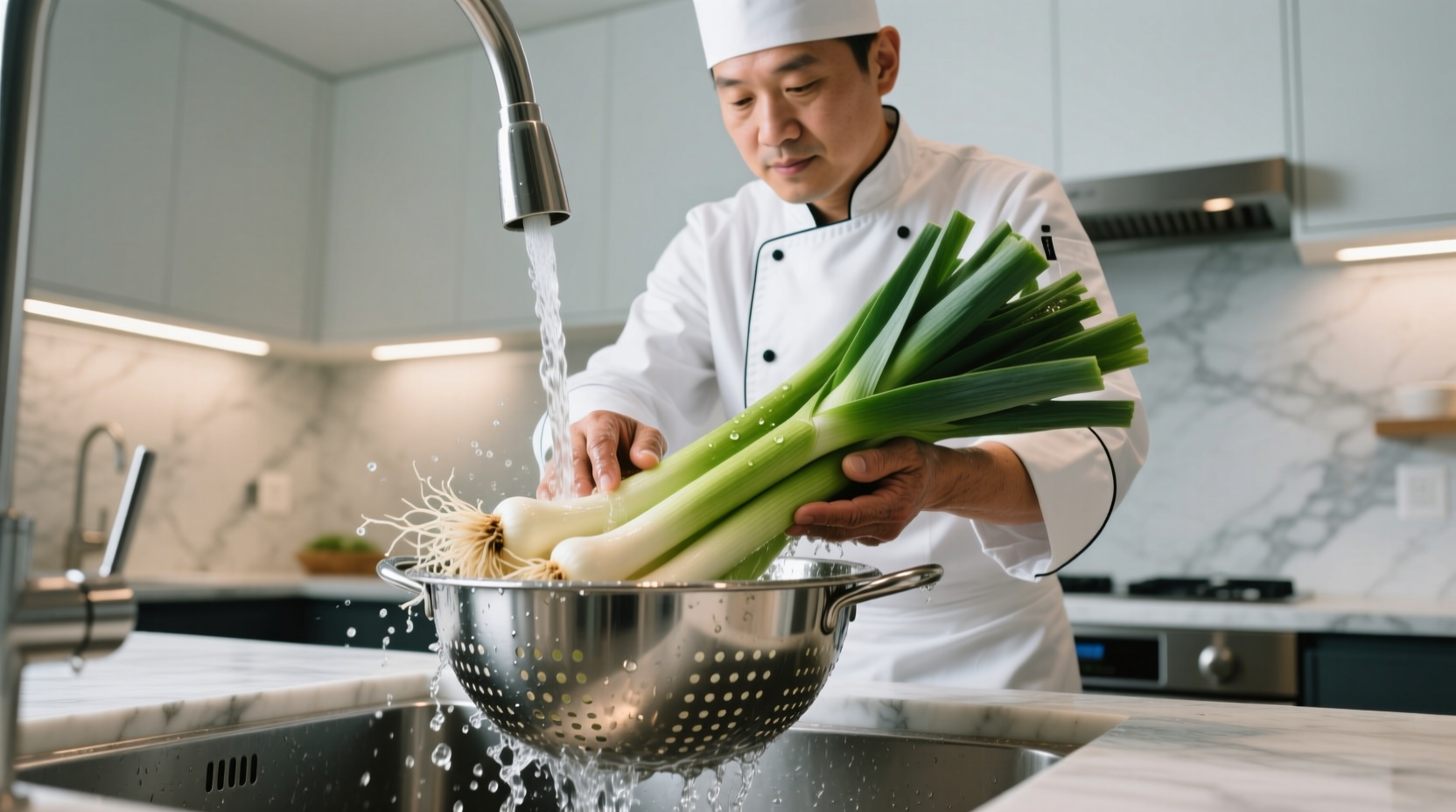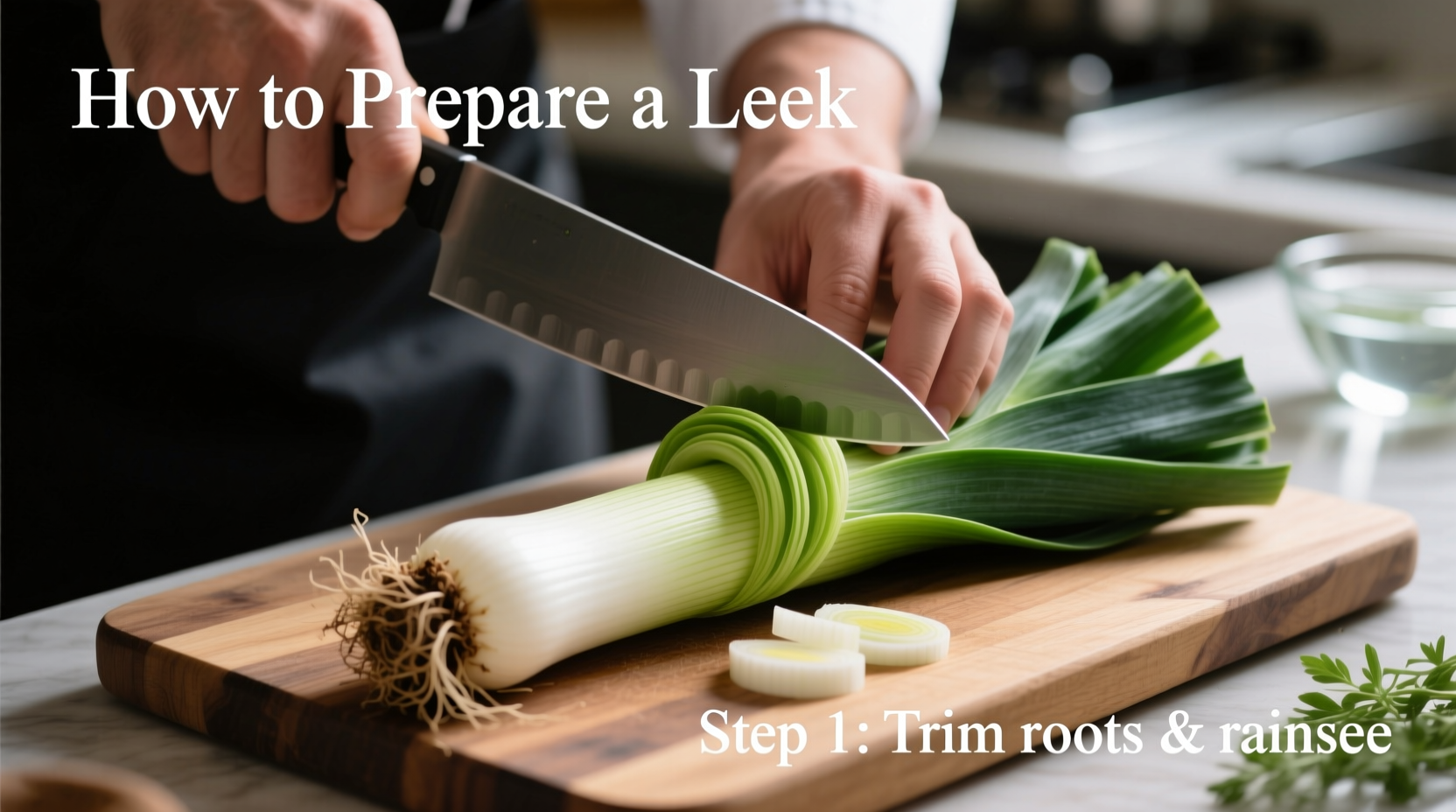Mastering Leek Preparation: From Market to Plate
Leeks often intimidate home cooks due to their layered structure and tendency to harbor dirt. But with the right technique, you'll transform this elegant allium into a kitchen staple that adds subtle onion flavor without overpowering dishes. Professional chefs rely on properly prepared leeks for soups, quiches, and sautés—and you can too.
Selecting Your Leeks
Choose leeks with crisp, bright green tops and firm white bases. Avoid any with yellowing leaves or soft spots. The ideal diameter for most home cooking is 1-1.5 inches—thicker leeks work well for grilling while thinner ones suit delicate sauces. Remember that only the white and light green portions are typically used in cooking; the dark green tops become bitter when raw but can flavor stocks.
The Critical Cleaning Process
Leeks trap dirt between their concentric layers, making thorough cleaning essential. After trimming, always slice lengthwise through the root end (leaving roots intact to hold layers together), then submerge in a large bowl of cold water. Gently separate the layers underwater to release trapped soil. Swish for 30 seconds, then lift the leek out—leaving dirt behind in the water.
| Cleaning Method | Time Required | Dirt Removal Effectiveness | Best For |
|---|---|---|---|
| Quick Rinse | 1 minute | Low (30%) | Emergency use only |
| Soak & Swish | 5 minutes | High (90%) | Daily cooking |
| Multiple Soaks | 10 minutes | Complete (99%) | Fine dining presentations |
According to the USDA Food Safety and Inspection Service, improperly cleaned produce accounts for 12% of vegetable-related foodborne illness cases. Leeks rank among the top five vegetables requiring special attention due to their layered structure (USDA Produce Safety Guidelines).
Cutting Techniques for Different Dishes
Your recipe determines the ideal cut:
- Half-moons (most common): After cleaning, slice crosswise into 1/4-inch rings. Perfect for soups and stocks
- Julienne: Cut lengthwise into thin matchsticks for stir-fries
- Chopped: Dice finely for omelets or fillings
- Whole: Keep small leeks intact for grilling or roasting
Professional chefs at the Culinary Institute of America emphasize that consistent sizing ensures even cooking—varying cut sizes lead to some pieces burning while others remain undercooked.
Cooking Prepared Leeks
Never add wet leeks directly to hot oil—the water causes dangerous splattering. Always pat dry with clean kitchen towels after cleaning. For sautéing, use medium-low heat with butter or olive oil for 8-10 minutes until tender but not browned. Roasting at 400°F (200°C) for 20 minutes caramelizes their natural sugars beautifully.
Food science research from the University of California Davis shows that cooking leeks below 300°F preserves maximum allicin content—the compound responsible for their health benefits (UC Davis Postharvest Technology Center).
Storage Solutions for Prepared Leeks
Store cleaned, cut leeks in an airtight container lined with paper towels in your refrigerator's crisper drawer. They'll stay fresh for 3-4 days. For longer storage, blanch in boiling water for 90 seconds, then freeze in portion-sized bags for up to 6 months. Never store uncleaned leeks in plastic bags—the trapped moisture accelerates spoilage.

Common Mistakes to Avoid
Many home cooks make these critical errors:
- Skipping the soaking step (guarantees gritty texture)
- Cutting before cleaning (traps dirt inside)
- Using the dark green parts in raw applications (bitter taste)
- Overcooking until mushy (loses delicate flavor)
Advanced Preparation Tips
For time-pressed cooks, try this professional shortcut: After trimming, use a vegetable brush to scrub the exterior, then make a small “X” at the root end before soaking. The cut allows water to penetrate deeper layers faster. When preparing multiple leeks, keep cleaned pieces in a bowl of ice water until ready to use—this prevents premature cooking from residual heat.











 浙公网安备
33010002000092号
浙公网安备
33010002000092号 浙B2-20120091-4
浙B2-20120091-4